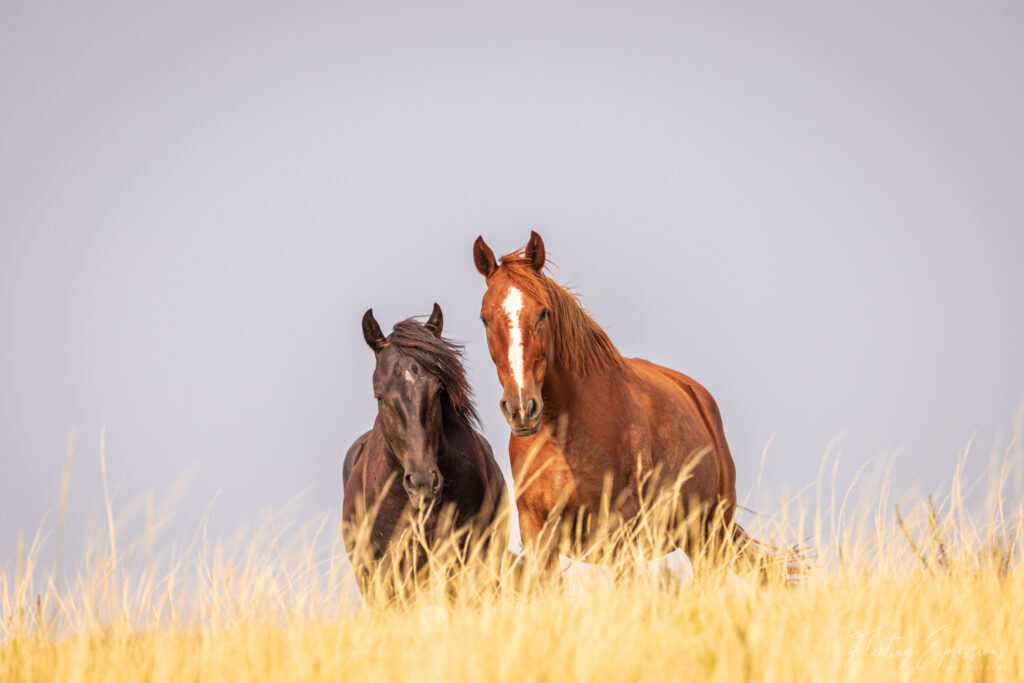A Sanctuary for Wildlife
Theodore Roosevelt National Park (TRNP) is a vital sanctuary for diverse wildlife, an important conservation area, and a destination for wildlife enthusiasts. We had never been to North Dakota before and weren’t sure what we would find. I knew we would be visiting TRNP so the potential for wildlife photography was high. It turned out to be the best wildlife I have experienced in our travels!
The park serves as a sanctuary for a diverse range of species, including bison, prairie dogs, wild horses, and various birds. Conserving these species ensures the preservation of the park’s unique ecosystems and the genetic diversity that is crucial for ecological resilience.
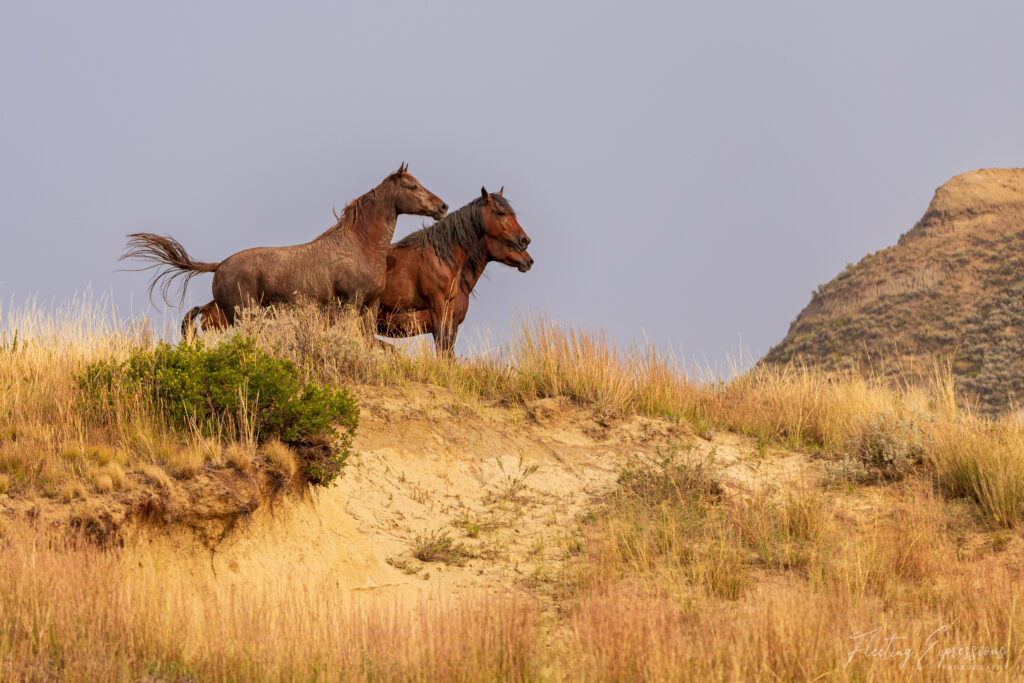
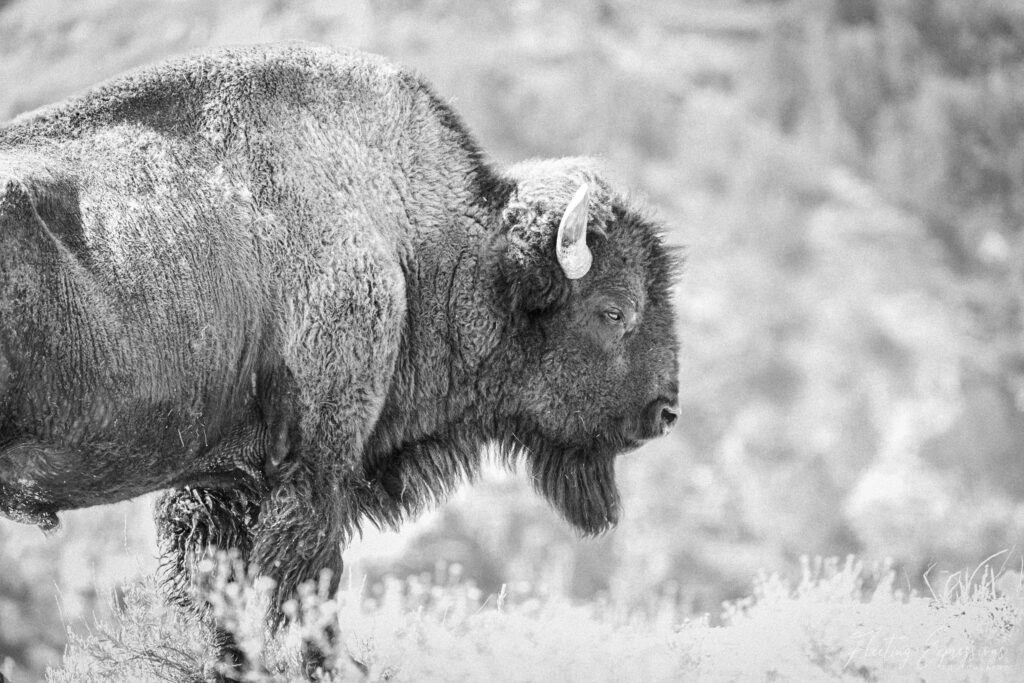
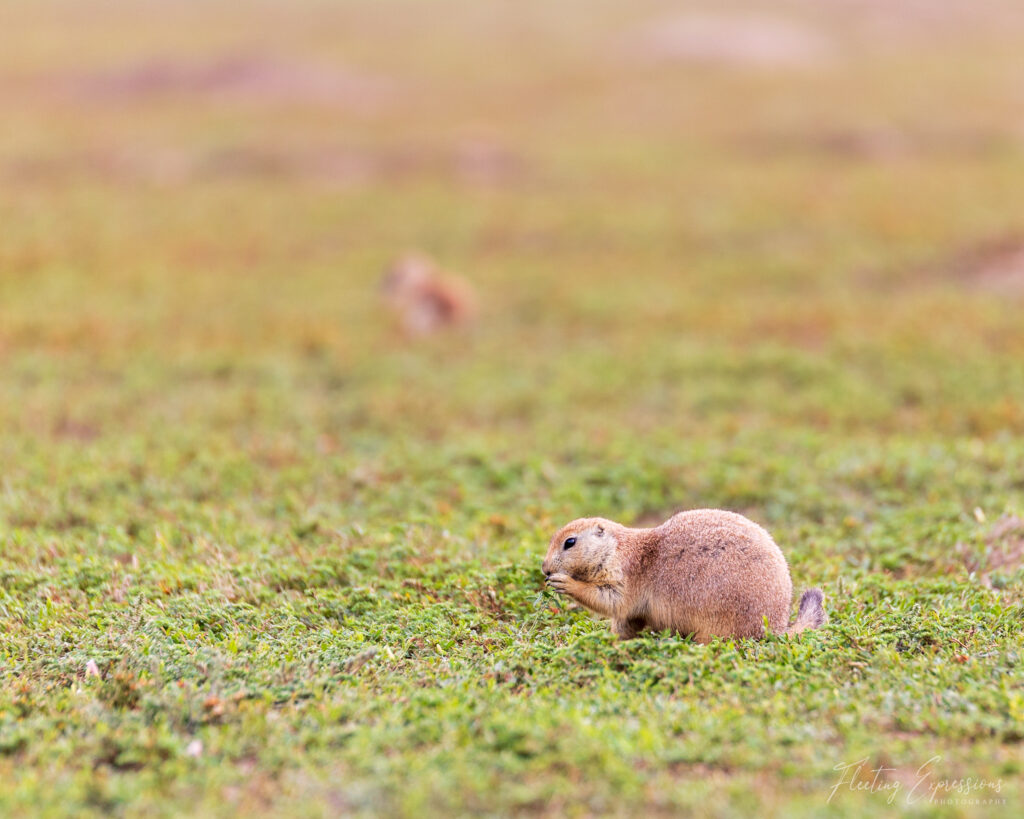
Bison...or Buffalo?
Bison or buffalo? The terms are often used interchangeably but buffalo and bison are different animals. Buffaloes are native to Asia and Africa. Bison are found in North America. At some point, they began to be referred to as American Buffalo. This sparked confusion. Regardless of what you call them, these magnificent creatures roam freely in both the North and South Units of the park.
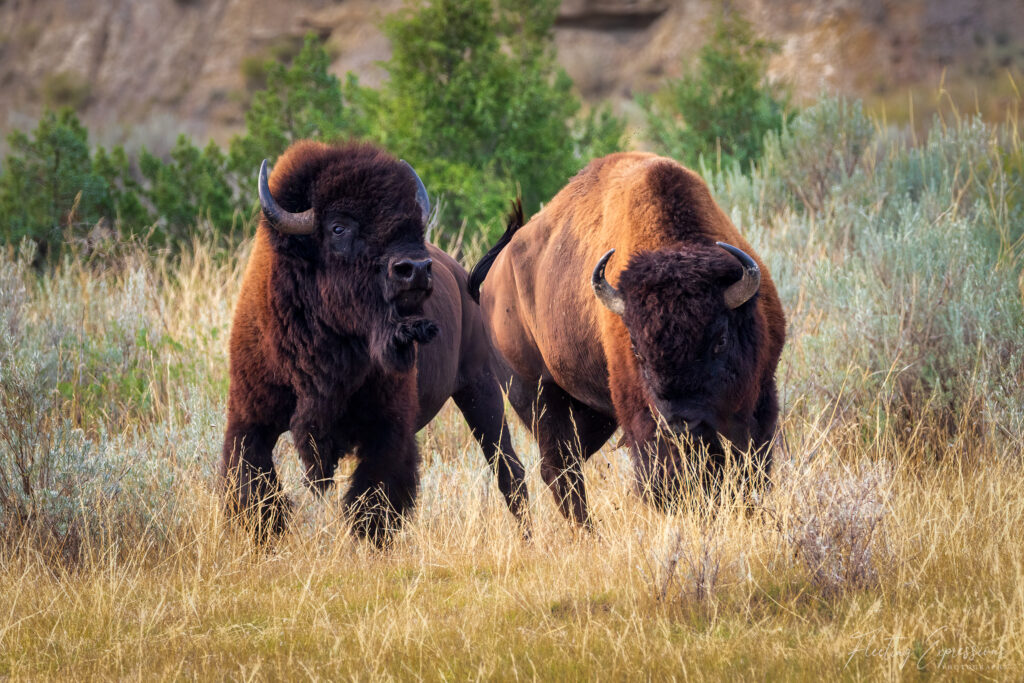
The Scenic Loop Drive in the South Unit offers great opportunities for viewing them. I have seen people approaching them multiple times so it seems important to share the reminder that they are wild animals and can be dangerous. They can run up to 35mph. Humans can run (on average) around 8mph. You do the math and make your own decisions as to how close you want to get!

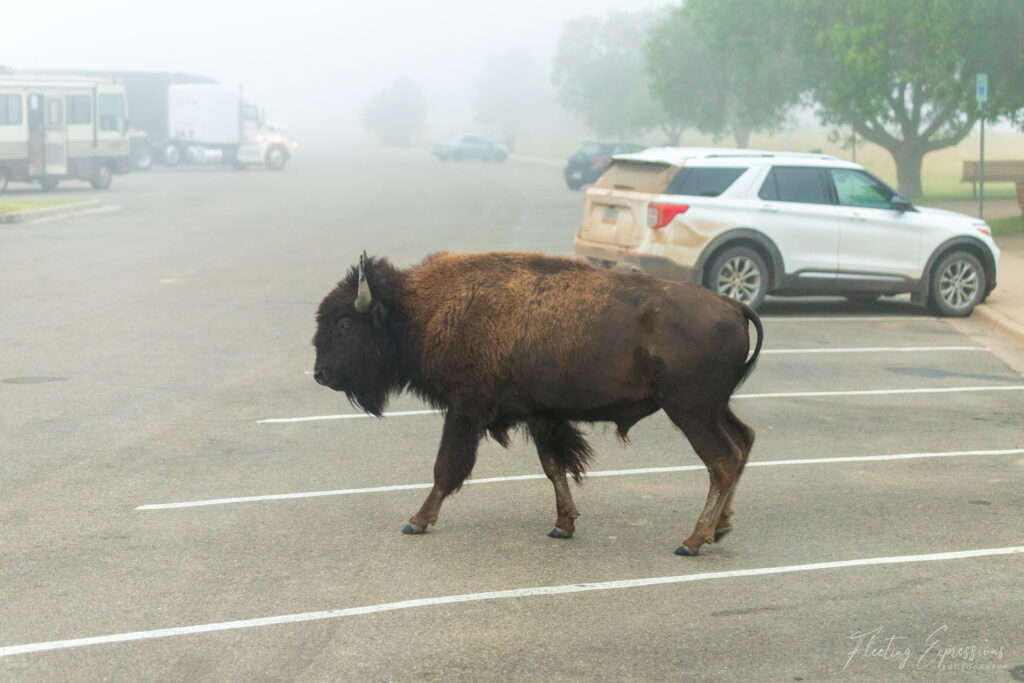
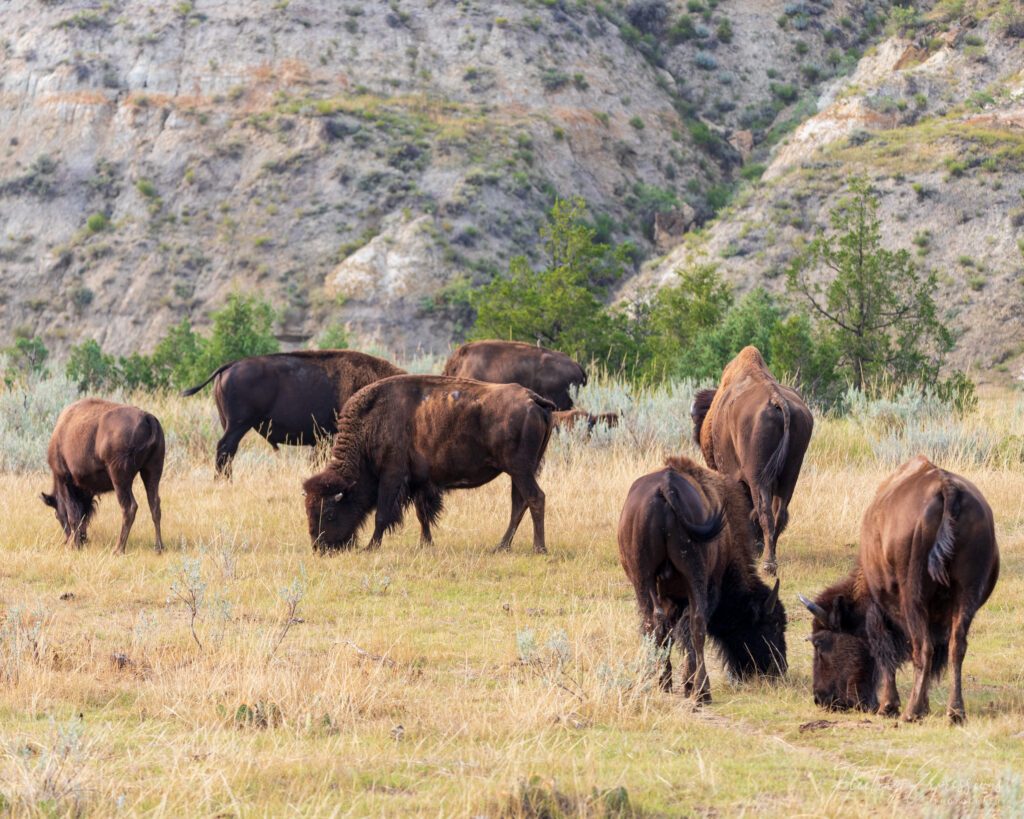
Bison are vital to Theodore Roosevelt National Park, playing a crucial role in maintaining the health of the grassland ecosystem. As one of the park’s most iconic species, they contribute to biodiversity by grazing, which promotes the growth of native plants and helps sustain other wildlife. Their presence also represents the park’s successful conservation efforts, echoing Theodore Roosevelt’s dedication to preserving America’s natural heritage. Seeing these majestic animals in their natural habitat offers visitors a powerful connection to the park’s history and ongoing ecological balance.
Photography Tips
- Maintain a Safe Distance: Bison are powerful and unpredictable animals. Use a telephoto lens (200mm or longer) to photograph them from a safe distance (at least 25 yards away). This ensures both your safety and the well-being of the bison. If an animal changes its behavior at your presence, you are too close.
- Capture the Landscape: Bison are iconic symbols of the American plains, so consider incorporating the surrounding landscape into your shots. Wide-angle shots that include rolling hills, grasslands, or dramatic skies can add depth and context to your photos.
- Photograph During Different Seasons: Bison look striking in various weather conditions. In winter, their thick coats contrast beautifully with the snow, while in summer, they often stand out against lush green grass. Each season offers unique opportunities to capture the essence of these majestic creatures so there is no “bad” time to photograph them.
While you can find bison throughout both the North and South units of the park, they are most active during the hours just after sunrise and just before sunset. Which is perfect for the golden hour light of the day.
Wild Horses
The bison may be bigger in numbers and stature, but the wild horses stole my heart!
They are descendants of horses brought by early settlers, ranchers, and Native Americans, making them a living symbol of the American West. Roaming the Badlands for centuries, these horses are most commonly spotted in the park’s South Unit, particularly along the Scenic Loop Drive.
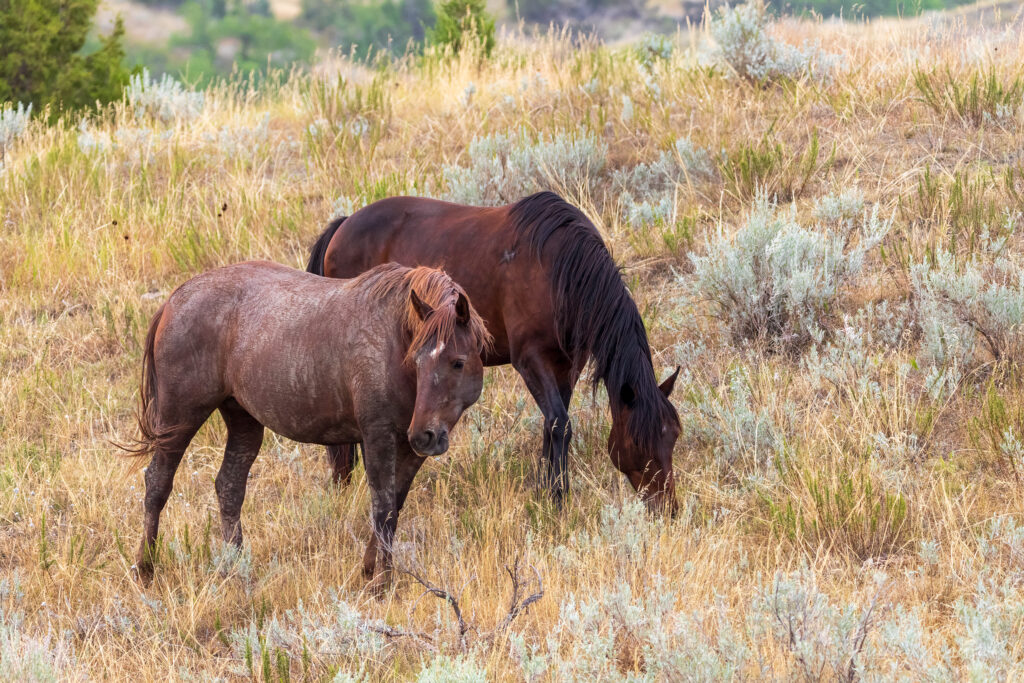
A management plan and federal protections for the horses are still needed to (hopefully) avoid any further actions. The management plan would likely reduce the numbers to 35-60 to maintain the ecosystem based on recommendations from the NPS. Federal protections would reduce the risk of decisions being reversed based on the wishy-washy nature of politicians. You can read more here.
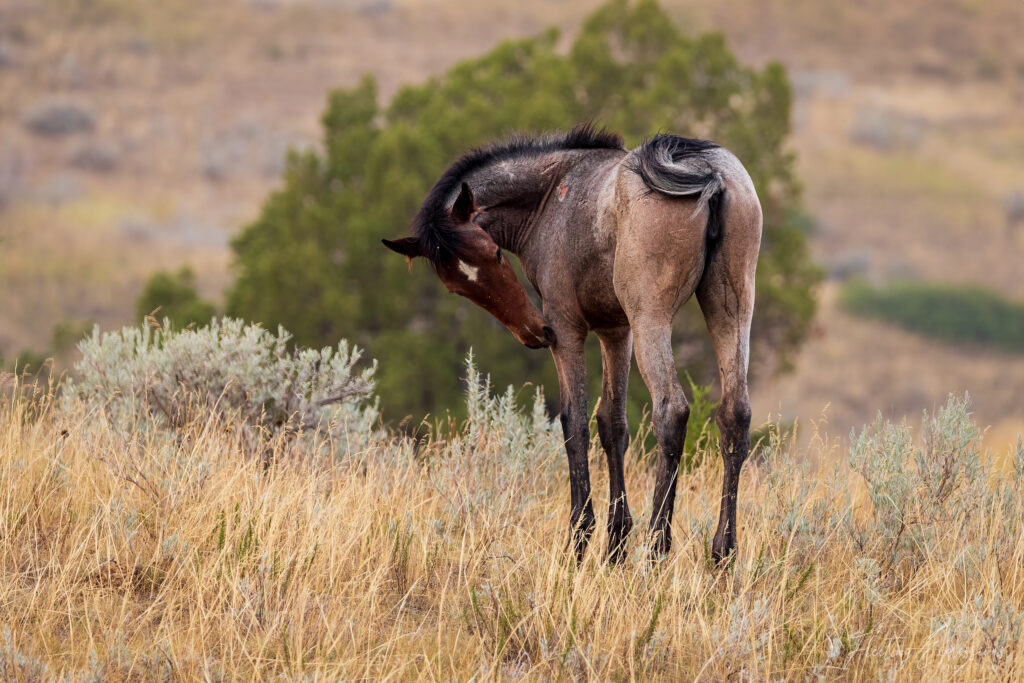
There are currently about 200 horses that roam the south unit of the park. In 2021 an environmental assessment began regarding the horses, generating a lot of concern from advocate groups that want to see the horses remain. There has been a lot of concern and disagreement about the management of the horses. In April 2024 that assessment was ended, and the horses will be allowed to remain in the park. At least for now.
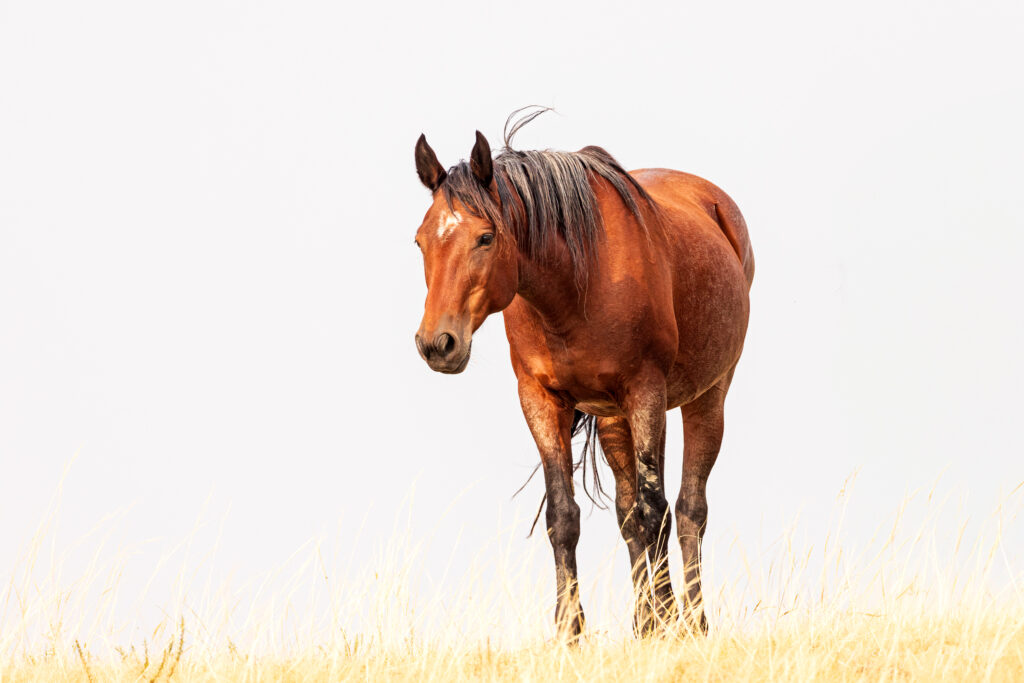
Photography Tips
- Shoot during golden hour. The best times to see them are early morning or late afternoon when you can witness herds grazing and interacting in the open grasslands. The soft, warm light during these times enhances the colors of the horses and the surrounding landscape, creating more visually appealing images.
- Wild horses are best photographed from a distance to avoid disturbing them. A zoom lens (200mm or longer) allows you to capture close-up shots of the horses’ expressions and interactions while maintaining a safe and respectful distance. I used my trusty Sigma 150-600mm.
- Wild horses exhibit fascinating behaviors, such as grazing, playing, or interacting with their herd. Capture these moments to tell a story through your photos. Including elements of the Badlands landscape in your shots can also provide context and emphasize the wild nature of the horses.
Watching these majestic animals, especially near spots like Boicourt Overlook, offers a unique and unforgettable glimpse into the untamed spirit of the West.
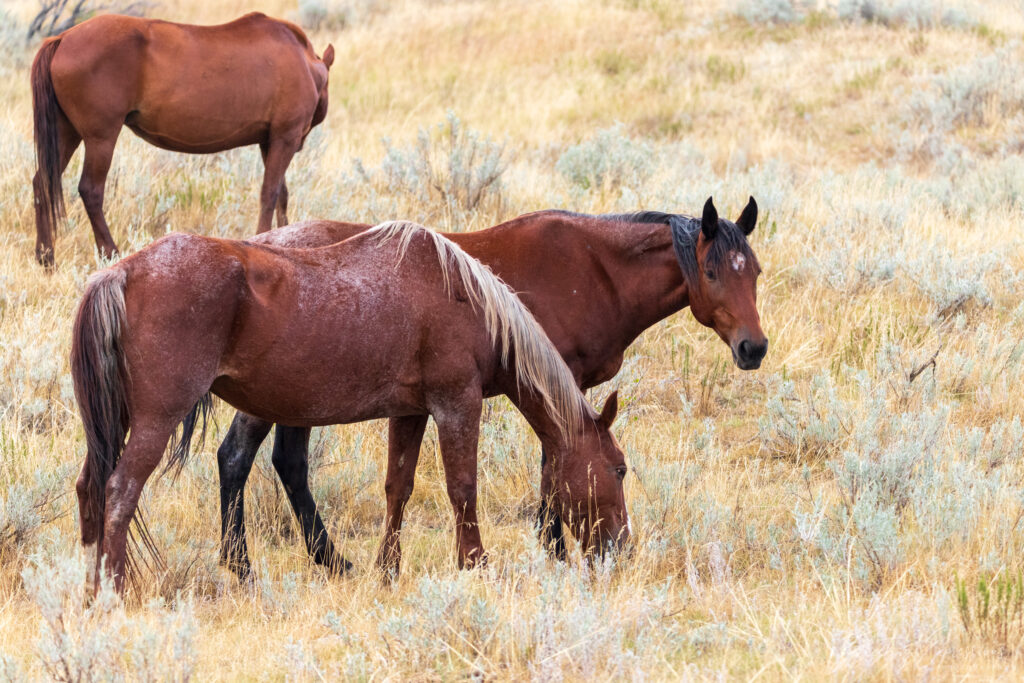

Prairie Dogs ... Guardians of the Prairie
Prairie dogs live in large colonies known as “towns,” which are made up of extensive underground burrows. These towns are scattered throughout the park’s grasslands, particularly in the South Unit, and are fascinating to observe for their social behaviors and communication.

Research suggests that prairie dogs have a highly complex communication system. Their alarm calls can convey specific information about the predator, such as its size, speed, and even color. This helps other prairie dogs in the colony understand the level of threat and respond accordingly.
If you spend time watching these little creatures they will entertain you with their antics! I watched a few jumping up and down while sending out warning signals. I think they were saying, “hurry, hurry!”
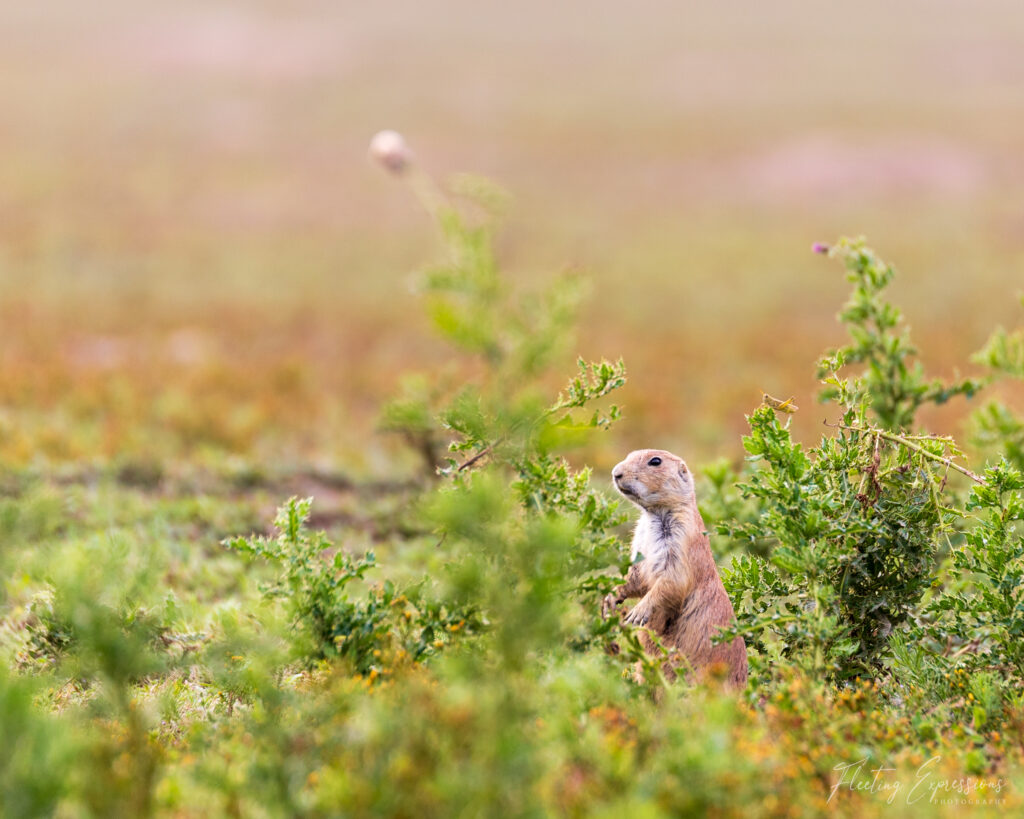
Prairie dogs are considered a cornerstone species in the park’s ecosystem. Their burrowing activities aerate the soil, which benefits plant life, and they provide food and shelter for other wildlife, such as burrowing owls, foxes, and ferrets. Their presence is crucial for maintaining the ecological balance of the prairie.
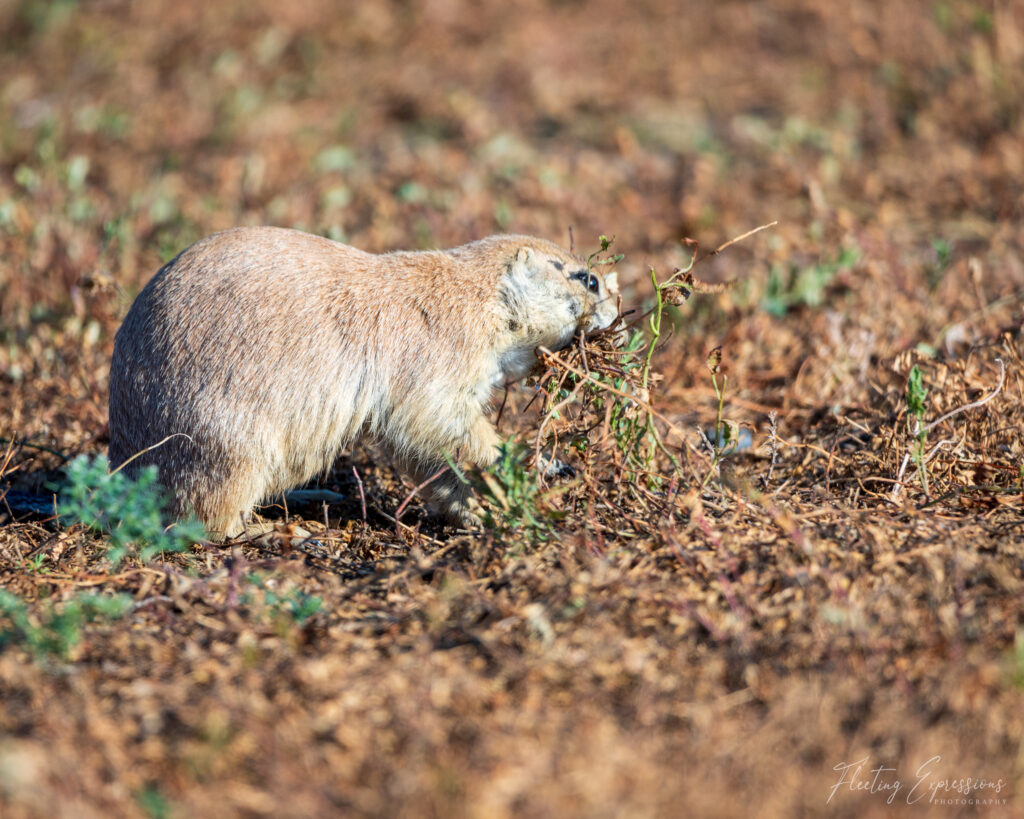
Photography Tips
- Get Low and Steady: Prairie dogs are small and close to the ground, so getting down to their level can create more engaging and intimate shots. Use a tripod or a steady hand to avoid camera shake, especially when zooming in on these tiny, fast-moving creatures. I balanced my camera on the ground to get as low as possible. That also helped to stabilize it.
- Use a Zoom Lens: To capture detailed images without disturbing the prairie dogs, use a zoom lens (200mm or longer). This allows you to photograph their behavior and expressions up close while maintaining a respectful distance.
- Be Patient and Observe: Prairie dogs are social animals with interesting behaviors, such as grooming, standing guard, or interacting with each other. Spend time observing them before snapping photos to anticipate these moments and capture dynamic shots that tell a story.
Additional Wildlife in the Park
While the bison, horses, and prairie dogs are the easiest to spot, be on the lookout for elk, big-horn sheep, and coyotes that also roam the park. I didn’t see any during my visits to the park but I would love to see your photos if you captured any of them!
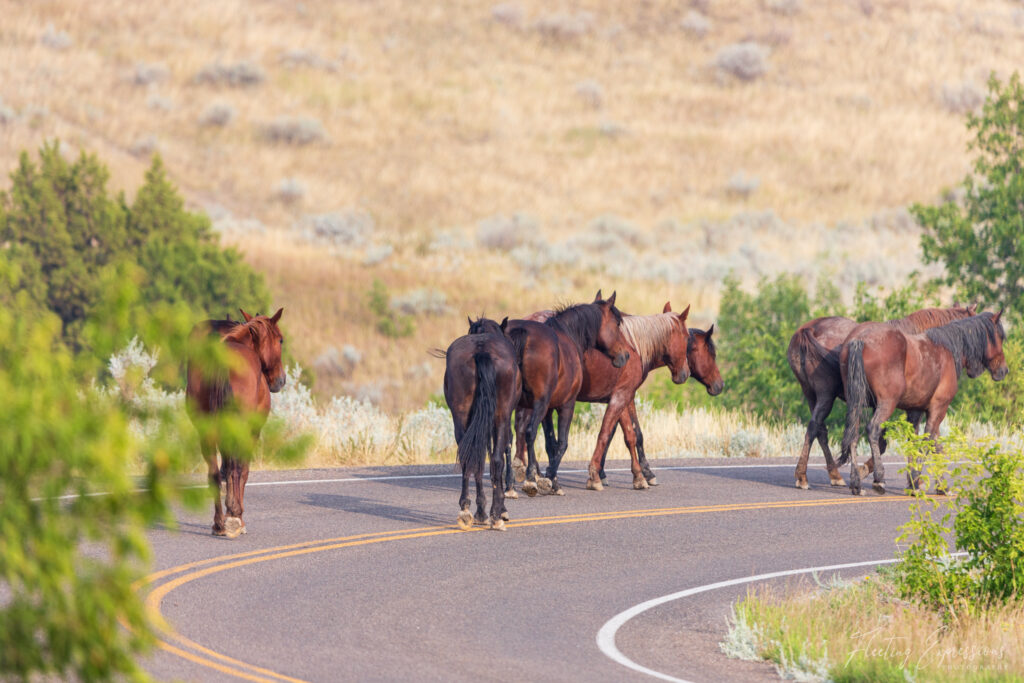
Experience the Wild Side of TRNP
“Wilderness is not a luxury but a necessity of the human spirit.” John Muir
There is a rich diversity of wildlife in Theodore Roosevelt National Park. I encourage you to visit and experience the park’s natural beauty and wildlife firsthand. Take your time on the scenic loop drive and maybe you will find the animals I missed! Leave me a comment and let me know what adventures you had at the park…or are planning to have!
For more about Theodore Roosevelt National Park check out “The Wild Beauty of Theodore Roosevelt National Park” here!
